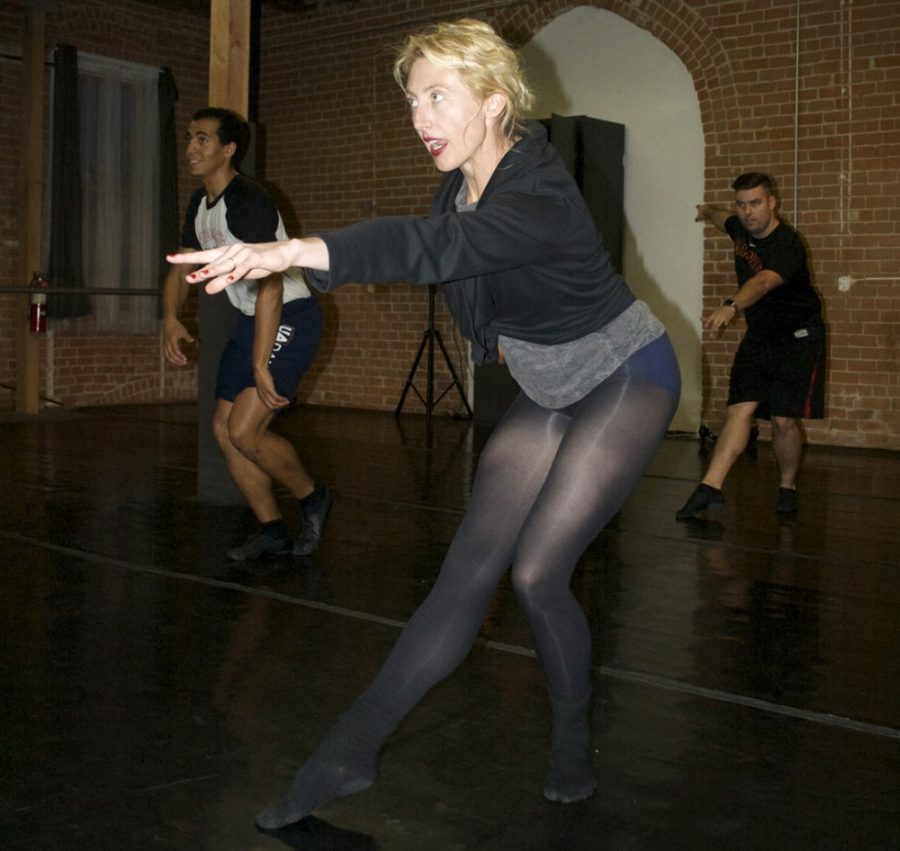One can feel an organic and creative energy pulsing through the brick walls as they step into the 100-year-old warehouse where Artifact Dance Project has put down its roots. The building is frequently filled with the rumbling sounds of a train passing just outside the studio windows. The historic studio emanates a 1920s atmosphere with its sounds and appearance, and transports all who enter into a different world.
As Ashley Bowman, co-artistic director of Artifact Dance Project along with Claire Hancock, led her students through some choreography, she encouraged them to “check outside things at the door” and focus on the quality of their dancing. Artifact dancers seem to embrace this freedom from time and incorporate it into their movements.
Bowman and Hancock created Artifact Dance Project in 2009 after studying at the UA School of Dance.
“After two years of studying dance to get our [Masters of Fine Arts], we decided to collaborate and do our thesis concert,” Bowman said. “We called it Artifact. The show was so successful that after the concert, people asked if we were going to start a dance company, so we did.”
With a foundation in modern, ballet and jazz established by the UA’s dance program, Bowman and Hancock decided to make those three styles the focus of their studio, fusing contemporary with jazz.
“We only offer those kinds of classes, in addition to [Hancock] teaching Pilates,” Bowman said, “so it gives young adults and adults an opportunity to get high quality training for whatever they need it to be.”
Another staple of Artifact Dance Project is its commitment to integrating live music into all of its performances.
“That’s our mission as a company,” Hancock said. “That’s what sets us aside a little bit. It really distinguishes us, because many dance companies — that’s the first thing to go is the live music element. … [Live music is] center and foremost to what we are doing.”
Artifact also emphasizes collaboration between different art forms. Hancock said Artifact works with painters, actors, songwriters, voice-over actors and others to enhance its dance performances. For example, Hancock cited an occasion when Artifact collaborated with Joe Pagac, a Tucson muralist, in its show of “I Wonder if My Name is Alice.” She said Pagac painted the sets as the dancers performed live in front of the audience.
“Chris Black, who wrote almost all the music for ‘Speak Easy’ that we’re about to do, was in the audience for the Joe Pagac evening,” Hancock said, “and they ended up doing a collaboration together because he liked what he saw from us. So, the collaborations that we do lead to other collaborations in the community. We found that to be true over and over again. The arts community just gets stronger and stronger, and more and more connections are being made.”
Shelly Hawkins, a dancer with Artifact Dance Project, has been a part of the company from the very beginning. She cherishes her time at Artifact and said that it has allowed her to push herself and grow as an artist.
“[Artifact is] great, because a lot of the time when you’re a dancer, you have to move to a big city … to where the jobs are,” Hawkins said. “[Bowman and Hancock have] given me an opportunity to have a dance life that is fulfilling even though I’m not in [Los Angeles] or Chicago or in New York.”
Moreover, Hawkins appreciates Hancock and Bowman’s innovative and stylistic minds.
“They’re really good at building this world with movement, choreography and the whole concept overall with lights and sets and everything,” Hawkins said. “Everything that we do is different, so every show is a different challenge. … [This season,] we did an in-studio fashion show, and then we did this really artsy, beautiful concert-style show.”
Currently, Artifact Dance Project is gearing up for its “Speak Easy” performance. The show will take place from April 3-5 at the Stevie Eller Dance Theatre on the UA campus. Bowman directed and choreographed “Speak Easy,” which actually premiered last year. However, Hancock said Artifact decided to bring the show back due to popular demand.
The story is set in the 1920s and centers around Lois Long, a woman who works for The New Yorker magazine, and her boss, Harold Ross, who is the magazine’s founding editor.
“Both are historical characters,” Bowman said, “and so the show is about the two of them and their social life with all of these crazy characters in the underground, prohibition-world of speakeasies. It’s very jazzy.”
Hawkins plays Lois Long and said the role presents many challenges.
“But it’s cool, because this time, I’m really just ready to nail it,” Hawkins said.
_______________
Follow Madison Scavarda on Twitter.









